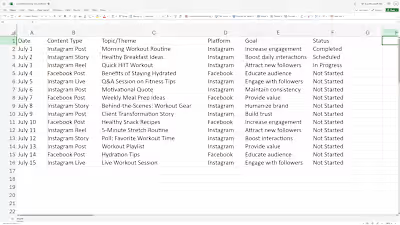Academic Writing - Research Letter Regarding 2024 Arctic Sea Ice
Predicting Arctic Sea Ice Coverage in Summer 2024
March 21, 2024
In "Predicting Arctic Sea Ice Coverage in Summer 2024," I applied my academic writing prowess to craft a research letter that delves into the critical analysis of Arctic sea ice dynamics. This project underscores my expertise in:
- APA Style Mastery: Adhering to the rigorous standards of APA formatting, I ensured the research letter was scholarly and publication-ready.
- Analytical Precision: Through a comprehensive literature review and data synthesis, I provided a nuanced forecast of Arctic sea ice concentration, extent, and thickness for summer 2024.
- Scientific Communication: I articulated complex climate phenomena in an accessible manner, discussing the interplay between sea ice conditions and global weather patterns.
The research letter presents a forecast suggesting a potential stabilization or slight increase in Arctic sea ice extent in 2024, based on data trends and climate predictions. It's a showcase of my ability to engage with complex scientific topics and present them with clarity and academic integrity.
Abstract:
Background
Arctic sea ice, a key component in our planet’s climate system, acts as a reflective barrier that modulates the energy exchange between the atmosphere and the ocean. Its extent and volume are sensitive indicators of climate change. The predictability of Arctic sea ice is of paramount importance for understanding future climate scenarios, as well as for the navigation and ecosystems that depend on its seasonal patterns. The rapid loss of Arctic sea ice in recent decades, especially during the summer, has attracted growing interest in the predictability and prediction practices of sea ice on seasonal timescales.
Purpose
This study aims to make a best-effort forecast of sea ice concentration (the fraction of ocean covered with sea ice), sea ice extent (the area of the ocean where sea ice concentration is larger or equivalent to 15%), and sea ice thickness in the Arctic Ocean in the summer of 2024. This is based on our best understanding and synthesis of existing scientific knowledge, data, and forecasting methodologies through literature review and online searching regarding the forecast of summer sea-ice coverage of the Arctic Ocean with a lead time of several months.
Hypothesis
The summer ice coverage in the Arctic Ocean is not only decreasing due to global warming but also fluctuating from year to year because of (1) the state of the sea ice and ocean in previous seasons and (2) the weather patterns from the previous winter to the current summer. Using the data for (1) and the research for (2), we can make different predictions of the summer Arctic sea ice conditions using different methods. We expect to make a conclusion based on our analysis/forecast and understanding of existing studies so that we can create a more meaningful conclusion.
Conclusions
A: We expect the Arctic sea ice extent/concentration in the summer of 2024 to either stay similar or slightly increase compared to the summer of 2023 condition. This forecast is based on the following reasons: (1) The sea ice extent in January 2024 is a slightly higher value compared to January 2023. This is the highest extent (or the smallest negative anomaly) for January observed since 2009. This is evidenced in the sea ice index data (Fetterer et al., 2017), which shows that the Arctic sea ice area was 12.19 million km² in January 2024, about 0.36 million km² more than in January 2023. (2) The tropical Pacific atmosphere-ocean condition has a likely transition from the current state of El Niño to ENSO-neutral over the spring or summer of 2024, and this can reduce the Arctic warming as experienced in 2023 (Clancy et al., 2021).
B: We might see growth in sea ice thickness anomalies (compared to the 2011 to 2023 average) over different regions of the Arctic in the summer of 2024. The mid-December 2023 thickness analysis, from the ESA SMOS & CryoSat-2 Sea Ice Data Product Processing and Dissemination Service at Alfred Wegener Institute, indicates up to 1.25 meters (4.1 feet) thicker ice over the Siberian side of the Arctic, and up to 1.25 meters (4.1 feet) thinner on the North American side, than the 2011 to 2023 average (Figure 6).
Compared with January 2023, the negative anomaly over the North American side and the positive anomaly over the Siberian side in January 2024 had become more evident. This may result in more extreme sea ice thickness anomalies over different regions of the Arctic in the summer of 2024.
C: Our forecast is based on predictors and the scientific knowledge we learned through literature review and online research. We selected two pre-condition factors (sea ice extent and concentration) and one climate pattern (El Nino Southern Oscillation) to create the forecast, simpler and more physically meaningful than using predictors only (e.g., Zhu et al., 2023).
Like this project
Posted Jul 1, 2024
Explore my 2024 Arctic Sea Ice study—simple, clear forecasts with real-world impact.
Likes
0
Views
3






